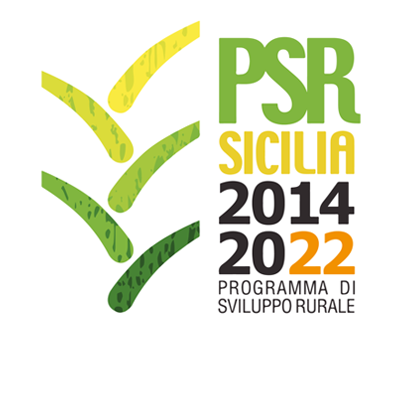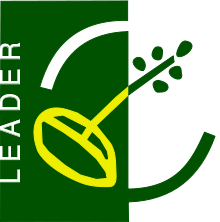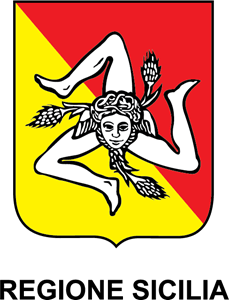Brahman cross
Country
Specie
ISO3
IDN
Language
eng.
Other name
Australian Brahman, BC
Breed classification (adaptedness)
Exotic
Breed classification (geographic)
Local
Adaptability to specific environment
Animals of this breed are known for their heat tolerance.
Specific reproductive characteristic
This breed has a low reproductive ability.
Special characteristic of product
The fat content of the meat is relatively high.
Color comments
uni coloured: white, greyish-white, reddish-white or blackish-white
Number of horns males
2
Number of horns females
0
Horn shape size and comments
short horns
Wither height males
140
Wither height females
130
Weight males
800.00
Weight females
500.00
Other specific visible traits
big and tall body with massive muscling and big head and hump
Herdbook
n
Domestication status
domestic
Taxonomic classification
Breed
Description of origin
composite of Bos indicus and Bos taurus, imported from Australia
Year of origin
1984
Location within country
Java, Sumatra, Kalimantan, Sulawesi, Nusatenggara
Local cryo conservation status
Sufficient
Local Risk
Unknown
Detailed local risk status
Unknown
Banteng (indon )
Country
Specie
ISO3
IDN
Language
eng.
Other name
Bos Sondaicus Schlegel and Müller, Bibos Banteng Wagner
Breed classification (geographic)
Local
Adaptability to specific environment
These animals are well adapted to minimum pasture and fodder conditions.
Specific reproductive characteristic
Animals of this breed are highly productive.
Color comments
uni coloured: black or brown with white stockings, rump patch <br>comment: Males change their coloured from reddish-brown to dark-brown black with maturity
Number of horns males
2
Number of horns females
2
Horn shape size and comments
sharp U-shape
Wither height males
120
Wither height females
108
Weight males
600.00
Weight females
400.00
Domestication status
wild
Taxonomic classification
Breed
Description of origin
wild species Bos (Bibos) banteng, Bos (Bibos) javanicus (d'Alton)
Location within country
mainly in Ujungkulon, west Java, also Baluran, east Java
Local cryo conservation status
No Information
Local Risk
Unknown
Detailed local risk status
Unknown
Bali
Country
Specie
ISO3
IDN
Language
Indonesian
Description
Indigenous cattle breed of Indonesia domesticated from the Banteng, a wild cattle species.
Transboundary name
Bali
Other name
Bali Cattle, Bibos banteng, Balinese
Breed classification (adaptedness)
Native
Breed classification (geographic)
International
Additional information
Bali cattel is widely distributed in Indonesia
Additional information comments
Native Indonesian cattle
Adaptability to specific environment
Good adaptability to cope severe environment, poor pasture or fodder as well as good heat tolerance
Specific resistance or tolerance
High resistance to local diseases, but susceptible to MCF (sheep as carrier) and Jembrana disease.
Specific reproductive characteristic
High reproductive rate
Special characteristic of product
White color with clear border (oval shape) on buttocks
Other special qualities
Black line on the back of female
Color comments
multi coloured Mainly reddish-brown turning black with white patches on hindquarters and legs for male; yellow-reddish-brown with white patches on hindquarters and legs for female.
Number of horns males
2
Number of horns females
2
Horn shape size and comments
sharp U-shape
Wither height males
265
Wither height females
450
Weight males
475.00
Weight females
250.00
Other specific visible traits
Males and females have black line-color upper back
Herdbook
y
Description of origin
especially domesticated from bos banteng
Year of origin
0
Location within country
Bali, Lombok, Timor, Sulawesi, eastern Java, Kalimantan, Sumatra, in almost 26 of 27 Indonesian provinces
Local cryo conservation status
Sufficient
Local Risk
Unknown
Detailed local risk status
Unknown
International Transboundary Risk detailed
Unknown
Aceh
Country
Specie
ISO3
IDN
Language
Indonesia
Description
Aceh is the name of the Province where this local beef breed adapted by generations.
Breed classification (adaptedness)
Locally adapted
Breed classification (geographic)
Local
Adaptability to specific environment
This breed is known for its heat tolerance.
Specific resistance or tolerance
Resistance to various parasitic diseases (ticks and worms) and to infectious diseases (i.e. Surra, MCF)
Specific reproductive characteristic
Fertility rate is very high
Special characteristic of product
Meat is preferred by Aceh community for traditional food
Color comments
uni coloured: white, greyish to reddish white with blurred white legs and belly
Number of horns males
2
Number of horns females
0
Horn shape size and comments
usual Zebu horn shape
Wither height males
116
Wither height females
102
Weight males
253.00
Weight females
148.00
Other specific visible traits
Ligther color down the body (lower legs, chest, abdomen up to a part between rear legs), inside of ears, around eyes and upper lip periphery.
Herdbook
n
Description of origin
Composite breed from the crossing between Bos sumatraensis cattle from indonesia and zebu cattle (Bos indicus) from India.
Location within country
Mostly in 23 district in NAD Province as well as in North Sumatera
Local cryo conservation status
Sufficient
Local Risk
Unknown
Detailed local risk status
Unknown
Kasuari
Country
Specie
ISO3
IDN
Language
indon.
Transboundary name
Cassowary
Other name
Casuarius casuarius, Cassowary
Breed classification (geographic)
International
Special characteristic of product
Animals of this breed produce brown meat which is very tasty.
Weight males
90.00
Weight females
80.00
Other specific visible traits
A big ratite bird which can not fly. It has almost no wings and strong feet with three toes. Has a hard red pea comb and blue colour neck. Produce 5-9 eggs per annum. Egg weight 600-750 grams.
Location within country
Aru and Ceram Island (Maluku), Irian Island
Local cryo conservation status
No Material
Local Risk
Unknown
Detailed local risk status
Unknown
International Transboundary Risk detailed
Unknown
Toraya
Country
Specie
ISO3
IDN
Language
Indonesia
Description
Body has various colour patterns.
Other name
spotted buffalo, Tedong Bonga, Kerbau Belang, Swamp buffalo
Breed classification (adaptedness)
Locally adapted
Breed classification (geographic)
Local
Adaptability to specific environment
High adaptability to locally tropical environment and local feed
Specific resistance or tolerance
Good resistance to local disease and parasites
Specific reproductive characteristic
Good fertility
Special characteristic of product
Toraya Buffalo is the most determine the degree of sanctity of a traditional ceremony.
Color comments
Body colors of black, gray, white and mixtures. As striped buffalo, this animals have large blotches, spots and small blotches.
Number of horns males
2
Number of horns females
2
Horn shape size and comments
Similar to swamp buffalo horn-shaped with curved horn side towards the rear. Horn size varies.
Wither height males
129
Wither height females
125
Other specific visible traits
shapes a straight face
Herdbook
n
Description of origin
This local swamp buffalo breed adapted hundreds of years especially in Tana Toraja and North Toraja.
Location within country
Tana Toraja and North Toraja
Local cryo conservation status
No Material
Local Risk
Unknown
Detailed local risk status
Unknown
Sumbawa
Country
Specie
ISO3
IDN
Language
Indonesian
Description
Sumbawa is the name of Sumbawa District in Sumbawa Island where the buffalo is adaptable by generations
Transboundary name
Wild Water Buffalo
Breed classification (adaptedness)
Locally adapted
Breed classification (geographic)
Regional
Additional information
Well adapted in two types of agro-ecosystem ie in wetlands and dry land
Additional information comments
Natural grassland (Rangeland) as places to live and grazing Sumbawa buffaloes
Adaptability to specific environment
Adapted well to wet land and dry land, especially in the islands of Sumbawa and surrounding areas. But fairly sensitive to limited feed shortage and heat stress.
Specific resistance or tolerance
Good resistance to local diseases and parasite invasion.
Specific reproductive characteristic
Relatively similar to swamp buffalo.
Special characteristic of product
Sumbawa buffalo has a compact body with full of meat.
Other special qualities
Male Sumbawa buffalo has a very sturdy body, compact, and short legs
Color comments
Generally, three types of skin color exist, i.e. pink, gray and black. There is white color at front of the head.
Number of horns males
2
Number of horns females
2
Horn shape size and comments
Most horns grow outwards and form a circle. Stem horn is round and blunt with gray color.
Wither height males
114.2
Wither height females
115.3
Weight males
353.00
Weight females
380.00
Other specific visible traits
Body shape is compact and full of meat. Females have big rump.
Herdbook
n
Description of origin
This local swamps buffalo breed adapted by centuries in Tana Samawa or Sumbawa Island in West Nusa Tenggara (NTB) and other smaller Sundah islands.
Location within country
Mostly in NTB, and spread throughout the islands of Nusa Tenggara and various provinces in Indonesia; even to Timor-Leste.
Local cryo conservation status
No Material
Local Risk
Unknown
Detailed local risk status
Unknown
Regional Transboundary Risk (detailed)
Not at Risk
Sumatra-Utara
Country
Specie
ISO3
IDN
Language
Indonesia
Description
Sumatera Utara is the name of local swamp buffalo breed that are adapted by generations in North Sumatera Province.
Other name
Kerbau Lumpur, Swamp buffalo, Swamp buffalo
Breed classification (adaptedness)
Locally adapted
Breed classification (geographic)
Local
Number of horns males
0
Number of horns females
0
Other specific visible traits
simillar morphology with swamp buffalo.
Domestication status
domestic
Location within country
North Sumatra
Local cryo conservation status
No Material
Local Risk
Unknown
Detailed local risk status
Unknown
Sumatra-Barat
Country
Specie
ISO3
IDN
Language
Indonesia
Other name
Kerbau Lumpur, Swamp buffalo, Swamp buffalo
Breed classification (adaptedness)
Locally adapted
Breed classification (geographic)
Local
Number of horns males
0
Number of horns females
0
Domestication status
domestic
Location within country
West Sumatra
Local cryo conservation status
No Material
Local Risk
Unknown
Detailed local risk status
Unknown
Simeulue
Country
Specie
ISO3
IDN
Language
Indonesia
Description
Local buffalo raised from generation to generation in Simeulue island of Aceh Province
Other name
Kerbau Gunung
Breed classification (adaptedness)
Locally adapted
Breed classification (geographic)
Local
Specific resistance or tolerance
Adaptable to parasite attack and heat stress
Specific reproductive characteristic
High reproduction ability and at 33 – 35 months reach its first parturition
Color comments
Redish fur color and white color around the eye, mouth and forehead, and white color in all legs
Other specific visible traits
Having specific horn shape which in local language mentioned as “korok”, “sapang”, “lefe”, “kiwing”, and “sanggeng”
Herdbook
n
Description of origin
Simeulue is the name of an island in Nanggroe Aceh Darussalam Province
Location within country
Salang region, West Simeulue, Central Simeulue district, and Alafan district
Local cryo conservation status
No Material
Local Risk
Unknown
Detailed local risk status
Unknown




